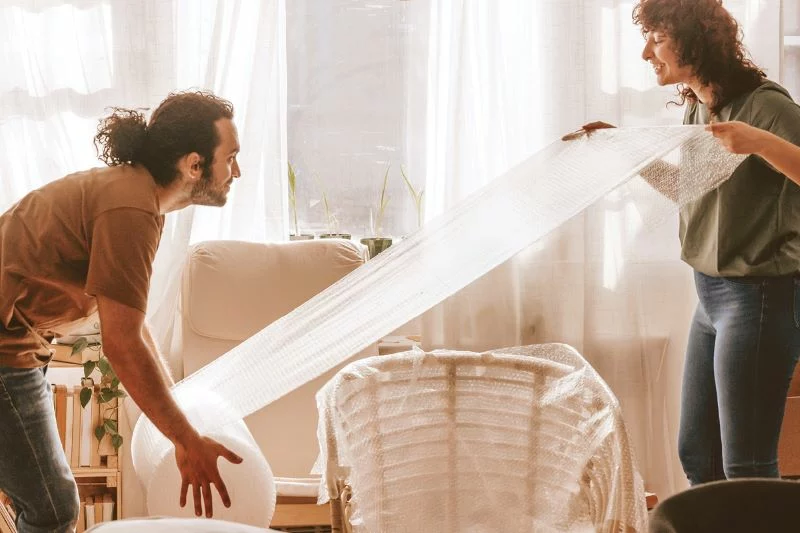Storing Furniture: What You Need to Know

Ever gaze lovingly at your favorite armchair one minute but then curse it the next because you keep tripping over it, and your whole living room feels like it’s bursting at the seams? Or maybe you’re knee-deep in a renovation, and the antique desk that’s been in your family for generations needs a safe place to call home until all the dust settles. No need to have a garage sale, not when there’s a Mini Mall Storage just around the corner. Our self-storage units are like comfy spare bedrooms for your belongings, and with a little know-how, you can keep your furniture safe and sound until it’s ready to return home again.
Now, you might be thinking, “Can’t I just shove everything in there and call it a day?” And while that might work for your underwear drawer, it’s not exactly a recipe for happy furniture or storage unit bliss. Keep reading while we transform you from a storage newb to a seasoned sofa stasher.
First Things First, Consider the Climate
Climate control is essential when storing furniture because it’s the best way to protect your possessions from the extremes of summer heat and winter chills, which can wreak havoc on materials like wood and upholstery. Just imagine your furniture sighing with relief as you usher it into a cool, controlled environment on a hot, humid day, saving it from moisture damage and musty odors.
Climate control is especially important for antique furniture, which is more susceptible to extreme fluctuations in temperature. Antique furniture is often fragile, and original stains and finishes may not withstand extreme heat or cold. It’s also vulnerable to cracking or deterioration from moisture loss—so if you’ve got special heirlooms you need to store, it’s best to opt for a temperature-controlled environment if you’re storing long-term.
But hey, if you’re storing sturdier furniture for a shorter period, a non-climate-controlled unit can work just fine. Either way, follow the prepping steps below to keep your furniture in top shape while tucked away.
Prepping Your Furniture for the Storage Long-Haul
When storing a piece of furniture, it’s tempting to just toss it into your storage unit and close the door. But even within a climate-controlled unit, there are some steps you’ll need to take to keep your furniture in pristine condition for the long haul.
- Clean it First
Ideally, everything you put in storage should be clean and dry first, and furniture is no different. Thoroughly wipe down wood surfaces to remove spills and stains, then protect with a wood polish. Upholstery should be thoroughly vacuumed, even deep into the crevices of your sofa cushions, to remove any food or debris that may rot and contribute to mold growth over time. Use an upholstery cleaner to remove stains and then protect it so it’s as clean and pristine as possible before wrapping up for storage.
- Wrap it Up
If you’re storing furniture for the long term, it’s worth it to invest in furniture blankets—they’re like luxurious suits of armor for your furniture. Wrap everything generously, covering legs, arms, and any other delicate bits that might be prone to damage if bumped. Pretend you’re wrapping presents for your future self and the whole thing will seem a lot more fun, trust us. Pro tip: avoid plastic sheeting, as it can trap moisture and lead to mildew growth.
- Let it Breathe
Leave space between your wrapped items and the walls to allow for air circulation. This helps prevent moisture build-up and keeps your furniture feeling fresh. It’s the same reason you don’t want to wrap furniture in plastic—over time, trapped moisture in the air can condense and cause major damage to your favorite pieces.
- A Storage Puzzle
When loading your unit, think Tetris, not Whack-a-Mole. Whenever possible, make good use of vertical space by stacking sturdier items on top of each other or standing longer items, like couches, up on their side to maximize vertical storage and save floor space. Just remember, avoid stacking anything on top of antique furniture—those pieces need to be treated as fragile regardless of how heavy they might be.
So, there you have it! With a little planning and these handy tips, your self-storage unit will become a haven for your furniture, keeping it safe and in good shape so it can take its place in your home again whenever you’re ready.
Want to know how much storage space you need? Mini Mall Storage is here to help. Check out our size guide to get started or contact us today to reserve a unit.